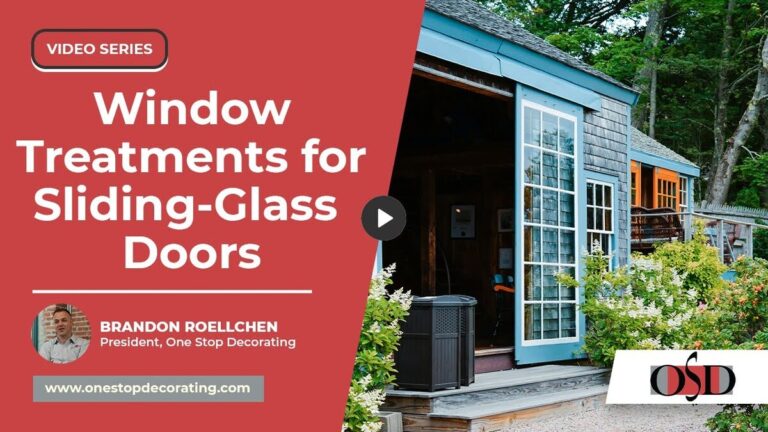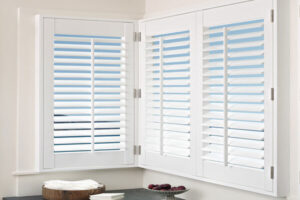Rising temperatures can send your energy bills soaring, especially if your windows are letting in more heat than you’d like. The good news? The right window blinds can make a big difference in how comfortable your home feels during hot weather. Below, we’ll break down the best blinds materials for hot climates, how each one helps insulate your space, and what extra features to look for when choosing a product that can handle the heat.
Why Window Treatments Matter in Hot Climates
Your home’s windows are one of the biggest sources of heat gain during hot weather. While roofs typically have built-in insulation, glass windows do not, making them vulnerable to outdoor heat. Quality blinds act as a barrier, reducing the amount of heat that enters your home and helping your air conditioner work more efficiently.
The right blinds material can:
- Block heat from entering your home.
- Protect your interior from harmful UV rays.
- Improve overall energy efficiency.
- Reduce glare and enhance indoor comfort.
Best Blinds Materials for Hot Climates
Choosing the best blinds material for hot climates requires understanding which materials perform best in high-heat conditions. Here are some top contenders:
1. Composition Blinds (Faux Wood)
Composition blinds, particularly faux wood blinds, are a popular choice for hot and humid climates. Unlike traditional PVC blinds that can warp or melt over time, high-quality composition blinds are designed to withstand heat without cracking, fading, or discoloring.
- Heat Resistance: Engineered to resist warping, even under intense sunlight.
- UV Protection: Often treated with UV coatings to prevent fading.
- Durability: Long-lasting performance, even in high-humidity areas.
At One Stop Decorating, we trust brands like Hunter Douglas, which offers an unconditional lifetime guarantee on many of their composition blinds.
2. Honeycomb Shades (Cellular Shades)
Honeycomb shades, also known as cellular shades, provide excellent insulation by trapping air within their cells. This air pocket creates a barrier that prevents heat from entering during the summer and retains warmth during the winter.
- Energy Efficiency: Superior insulation compared to flat fabric shades.
- Light Control: Available in various opacities, from sheer to blackout.
- Stylish Options: Modern, sleek designs fit any decor.
Hunter Douglas Duette and Applause shades are popular options that use advanced technology to maximize insulation.
3. Plantation Shutters
Plantation shutters are not just aesthetically pleasing; they are also highly effective at insulating windows.
- Thick Barrier: Crafted from wood, vinyl, or composite materials, these shutters provide a solid barrier against heat.
- Durability: Composition shutters are guaranteed not to warp or crack.
- Light Control: Adjustable louvers allow precise control over sunlight and privacy.
4. Insulating Roman Shades
Roman shades with insulating liners offer a stylish yet practical solution for hot climates.
- Layered Fabric: Multiple layers of fabric with a thermal liner provide superior insulation.
- Versatility: Available in various styles and colors.
- UV Protection: Helps prevent fading of furniture and flooring.
Additional Features to Consider
When selecting blinds for hot climates, consider these additional features to enhance performance:
- UV Coatings: Reduces fading and prolongs the lifespan of the blinds.
- Light-Blocking Capabilities: Blackout options can dramatically reduce heat gain.
- Color Choices: Lighter colors reflect more heat, keeping rooms cooler.
Best Practices for Maximizing Energy Efficiency
To get the most out of your window treatments, follow these tips:
- Install Blinds Close to the Glass: Reduces heat transfer.
- Use Layered Window Coverings: Combine shades with curtains for added insulation.
- Opt for Automated Blinds: Schedule blinds to close during peak heat hours.
In Summary
Selecting the best blinds material for hot climates involves understanding your options and knowing which materials provide the best insulation and durability. Whether you choose composition blinds, honeycomb shades, plantation shutters, or insulating Roman shades, each option offers unique benefits to help keep your home cool and comfortable.
If you would like more information, contact us. At One Stop Decorating, we’re happy to help you find the perfect solution to beat the heat and enhance your home’s energy efficiency.












